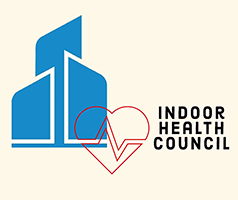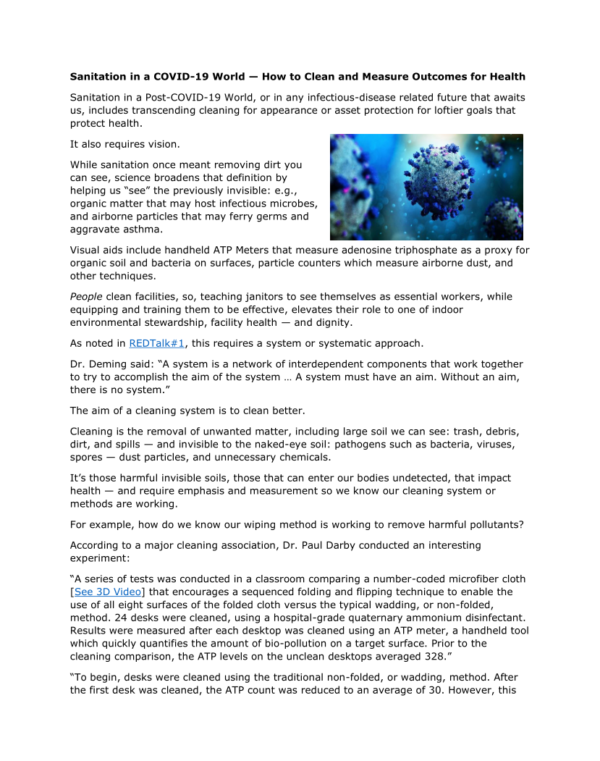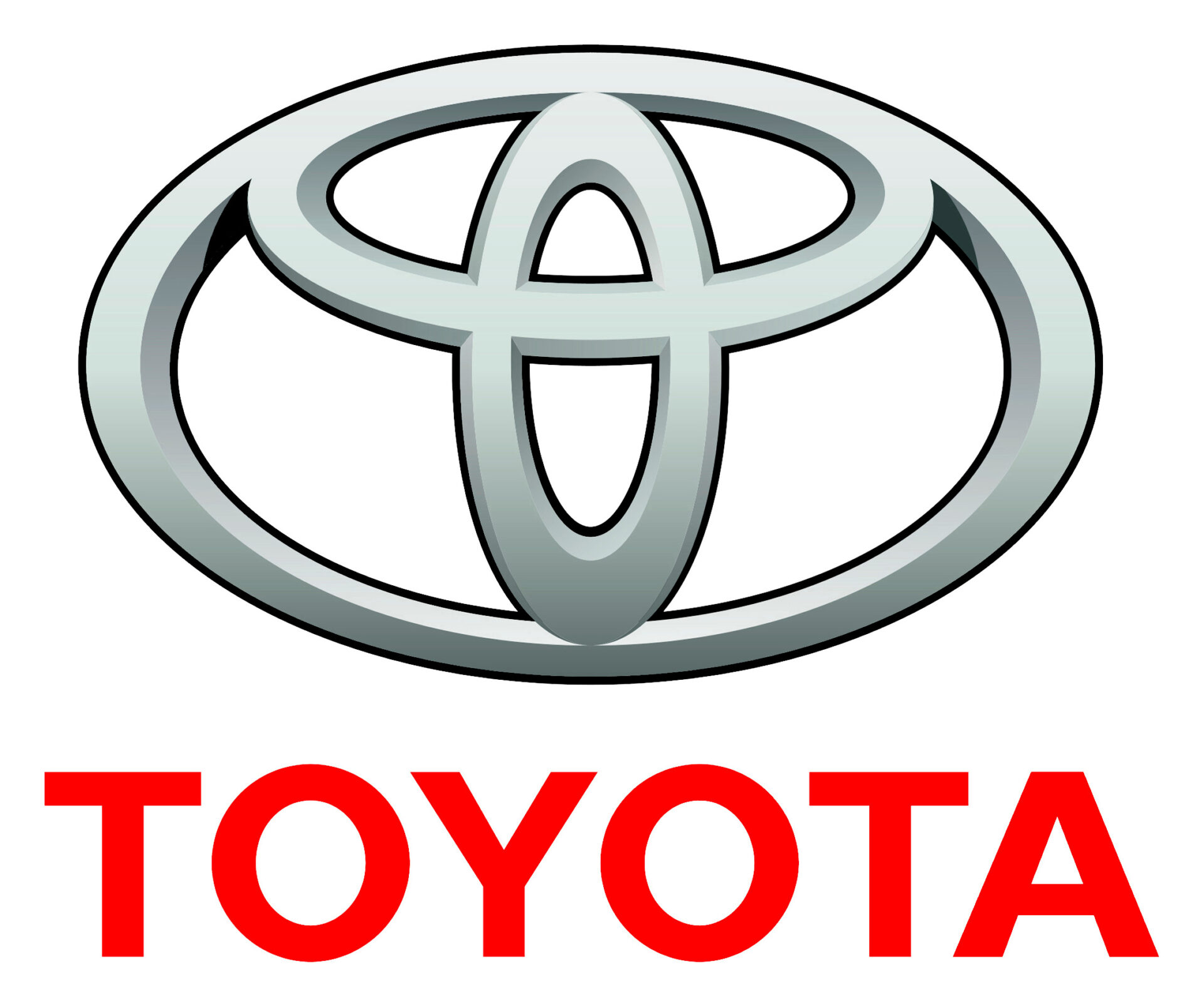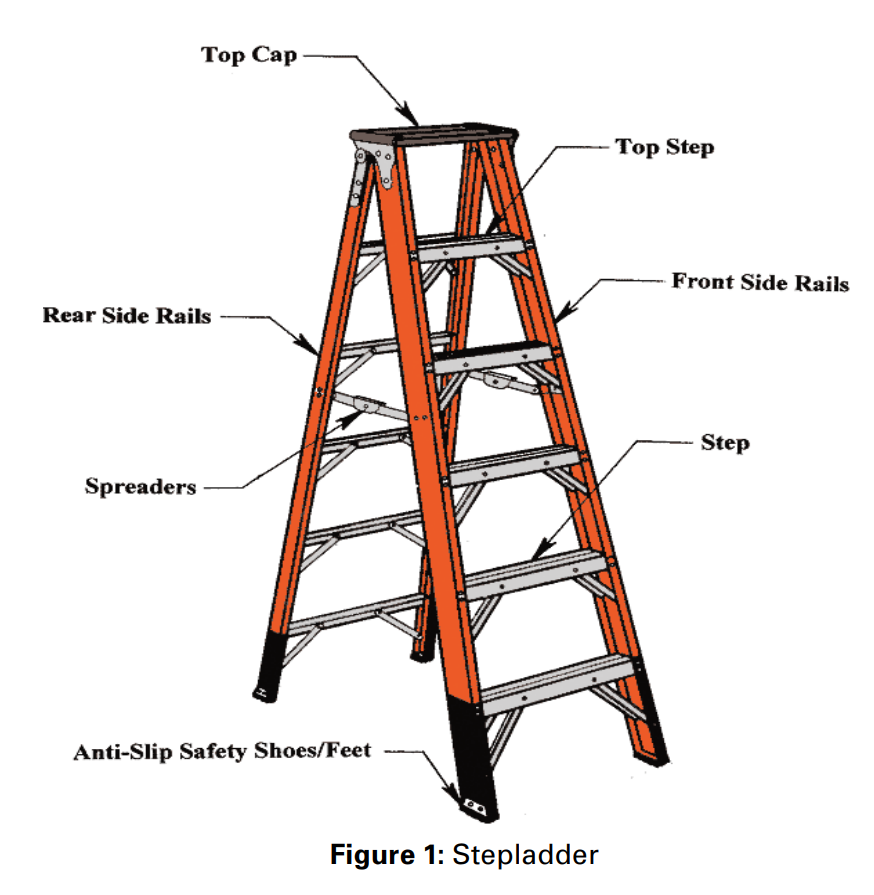Sanitation in a Pre- and Post-Pandemic World — How to Clean and Measure Outcomes for Health
Sanitation in a Post-COVID-19 World, or in any infectious-disease related future that awaits us, includes transcending cleaning for appearance or asset protection for loftier goals that protect health.
It also requires vision.
While sanitation once meant removing dirt you can see, science broadens that definition by helping us “see” the previously invisible: e.g., organic matter that may host infectious microbes, and airborne particles that may ferry germs and aggravate asthma.
Visual aids include handheld ATP Meters that measure adenosine triphosphate as a proxy for organic soil and bacteria on surfaces, particle counters which measure airborne dust, and other techniques.
People clean facilities, so, teaching janitors to see themselves as essential workers, while equipping and training them to be effective, elevates their role to one of indoor environmental stewardship, facility health — and dignity.
As noted in REDTalk#1, this requires a system or systematic approach.
Dr. Deming said: “A system is a network of interdependent components that work together to try to accomplish the aim of the system … A system must have an aim. Without an aim, there is no system.”
The aim of a cleaning system is to clean better.
Cleaning is the removal of unwanted matter, including large soil we can see: trash, debris, dirt, and spills — and invisible to the naked-eye soil: pathogens such as bacteria, viruses, spores — dust particles, and unnecessary chemicals.
It’s those harmful invisible soils, those that can enter our bodies undetected, that impact health — and require emphasis and measurement so we know our cleaning system or methods are working.
For example, how do we know our wiping method is working to remove harmful pollutants?
According to a major cleaning association, Dr. Paul Darby conducted an interesting experiment:
“A series of tests was conducted in a classroom comparing a number-coded microfiber cloth that encourages a sequenced folding and flipping technique to enable the use of all eight surfaces of the folded cloth versus the typical wadding, or non-folded, method. 24 desks were cleaned, using a hospital-grade quaternary ammonium disinfectant. Results were measured after each desktop was cleaned using an ATP meter, a handheld tool which quickly quantifies the amount of bio-pollution on a target surface. Prior to the cleaning comparison, the ATP levels on the unclean desktops averaged 328.”
“To begin, desks were cleaned using the traditional non-folded, or wadding, method. After the first desk was cleaned, the ATP count was reduced to an average of 30. However, this number continued to climb as the cleaning progressed until it reached 130 on the last desk, illustrating how quickly the towels lose their ability to remove contaminants. (Some tests indicate that towels will eventually accumulate and deposit enough contaminants to exceed the initial surface soil levels. This is consistent with recent research concluding that it’s actually better not to clean than to clean ineffectively.)”
Bottom Line — proper microfiber cloth folding [see 3D video] improves outcomes — but only measurement proves it! More on this soon.
As Alvin Toffler alluded, measurement (and the info it provides) causes a power shift. It puts power back into the hands of users.
That is why validating our cleaning system through measurement is so important.
We will discuss more specifics of how to measure, with what, and why, in future discussions.





